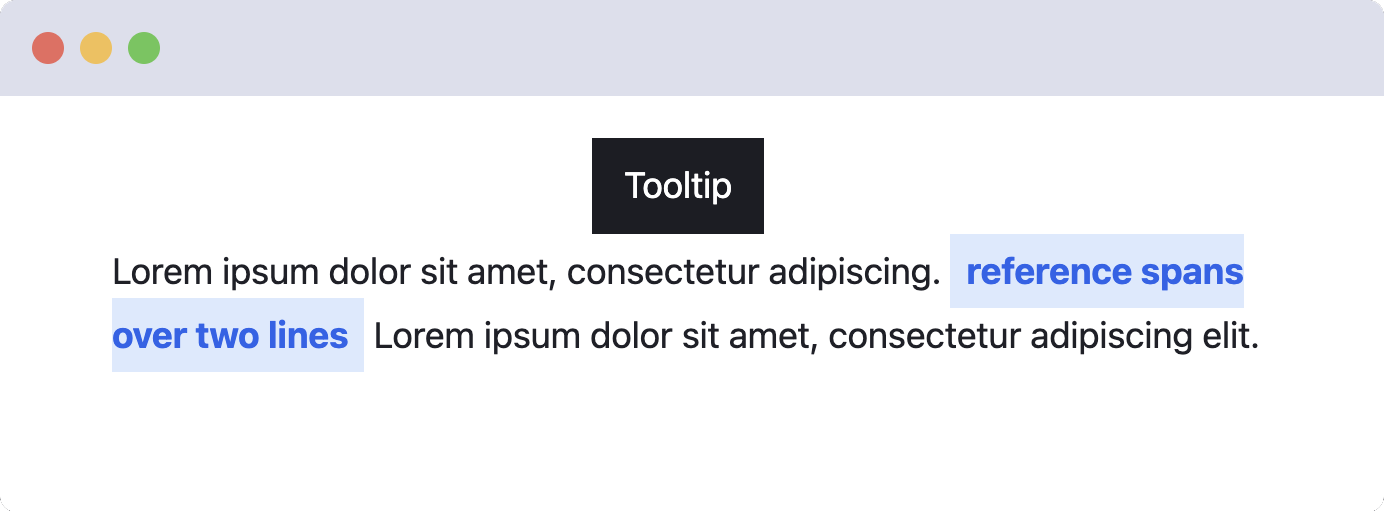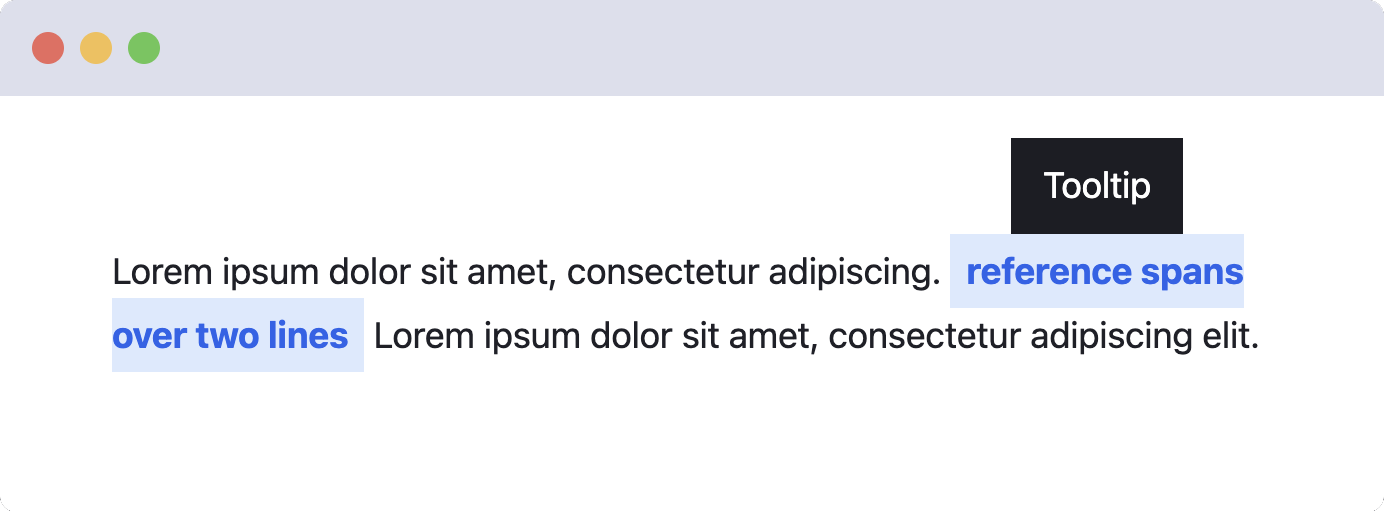inline
Improves positioning for inline reference elements that span over multiple lines.
import {inline} from '@floating-ui/dom';This is useful for reference elements such as hyperlinks or range
selections, as the default positioning using
getBoundingClientRect() may appear “detached” when
measuring over the bounding box.
In the following examples, the placement is
'top'.
Without inline():

With inline():

Usage
computePosition(referenceEl, floatingEl, {
middleware: [inline()],
});Choosing a rect
By default, inline() infers which of the
ClientRects to choose based on the placement.
However, you may want a different rect to be chosen.
For instance, if the user hovered over the last client rect, you likely want the floating element to be placed there. This logic is only applied when the reference element’s rects are disjoined.
function onMouseEnter({clientX: x, clientY: y}) {
computePosition(referenceEl, floatingEl, {
middleware: [inline({x, y})],
}).then(({x, y}) => {
// ...
});
}
referenceEl.addEventListener('mouseenter', onMouseEnter);Order
inline() should generally be placed toward the beginning
of your middleware array, before flip() (if used).
Options
These are the options you can pass to inline().
interface InlineOptions {
x?: number;
y?: number;
padding?: number | SideObject;
}x
default: undefined
This is the viewport-relative (client) x-axis coordinate which can be passed in to choose a rect.
y
default: undefined
This is the viewport-relative (client) y-axis coordinate which can be passed in to choose a rect.
padding
default: 2
This describes the padding around a disjoined rect when choosing it.
Deriving options from state
You can derive the options from the middleware lifecycle state:
inline((state) => ({
padding: state.rects.reference.width,
}));